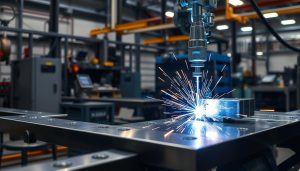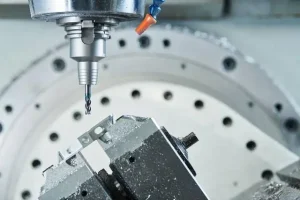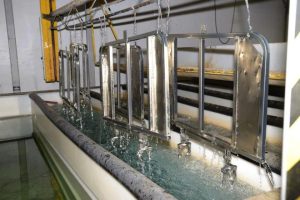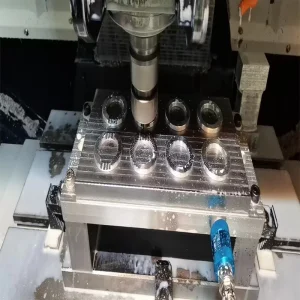When it comes to welding, there are several techniques to choose from, each with its own unique advantages and drawbacks. Among the most popular options are laser, MIG, and TIG welding. Selecting the right welding method can have a significant impact on the quality, efficiency, and overall success of your project. In this article, we’ll explore the key differences between these three welding techniques, helping you determine which one is the best fit for your specific needs.
What is Laser Welding?
Laser welding is a highly advanced welding technique that utilizes a concentrated beam of light to join materials with remarkable precision and minimal distortion. This innovative laser welding technique has revolutionized the world of high-precision welding, offering numerous advantages over traditional welding methods.
Overview of Laser Welding Process
In the laser welding process, a powerful laser beam is focused onto the workpiece, creating an intense heat that melts the materials and forms a weld. The laser’s high energy density and the ability to precisely control the beam’s focus and intensity allow for a narrow, deep weld with a small heat-affected zone, resulting in a clean and efficient joining process.
Advantages of Laser Welding: High Precision and Low Distortion
The key benefits of the laser welding technique include its exceptional precision and the ability to minimize distortion in the welded components. The laser’s focused energy and precise control allow for high-quality, low-distortion welds, making it an ideal choice for delicate or heat-sensitive applications. Laser welding is particularly well-suited for manufacturing intricate parts with tight tolerances, as it can create strong, durable joints without compromising the integrity of the surrounding material.
| Feature | Benefit |
|---|---|
| High Precision | Laser welding enables the creation of consistent, high-quality welds with tight tolerances, making it ideal for complex and intricate parts. |
| Low Distortion | The focused energy and controlled heat input of laser welding minimizes the heat-affected zone, resulting in low distortion and warpage of the welded components. |
“Laser welding is a game-changer in the world of high-precision manufacturing, offering unparalleled control and exceptional results.”
What is MIG Welding?
MIG (Metal Inert Gas) welding is a popular welding technique that offers a fast and versatile welding process. This method uses a continuously fed wire electrode and a shielding gas to create a strong, high-quality weld. The MIG welding technique is widely used across various industries due to its speed, ease of use, and ability to handle a wide range of materials and thicknesses.
Overview of MIG Welding Process
In MIG welding, an electric arc is formed between a consumable wire electrode and the workpiece. The wire electrode is fed continuously through a welding gun, while a shielding gas, such as argon or carbon dioxide, is used to protect the molten metal from the surrounding atmosphere. The combination of the electric arc, the wire electrode, and the shielding gas results in a fast, efficient, and high-quality weld.
Benefits of MIG Welding: Speed and Versatility
One of the primary advantages of the MIG welding technique is its speed. The continuous wire feed and the ability to weld in all positions make MIG welding a fast and productive process, allowing welders to complete projects in a shorter amount of time. Additionally, MIG welding is a versatile welding process that can be used on a variety of materials, including mild steel, stainless steel, aluminum, and more. This fast welding method is well-suited for both thin and thick materials, making it a popular choice for a wide range of applications.
“MIG welding is a game-changer for industries that require speed and versatility in their welding processes. The combination of efficiency and material compatibility makes it an invaluable tool for modern fabrication.”
What is TIG Welding?
TIG (Tungsten Inert Gas) welding is a precise and versatile welding technique that produces high-quality welds. Unlike other welding methods, TIG welding utilizes a non-consumable tungsten electrode and a separate filler material, allowing for exceptional control and precision during the welding process.
How TIG Welding Works
In TIG welding, an electric arc is struck between the tungsten electrode and the workpiece, creating intense heat. This heat melts the base metal, and the welder manually adds a filler material to the joint, forming a strong, high-quality weld. The process is further enhanced by the use of an inert gas, such as argon or helium, which shields the weld from atmospheric contamination, ensuring optimal weld integrity.
Benefits of TIG Welding: Quality and Control
- Produces high-quality welds with minimal distortion and superior aesthetic appearance
- Allows for precise welding control and the ability to work with thin materials
- Offers exceptional control over the weld pool, enabling the creation of complex and intricate welds
- Results in a cleaner, more professional-looking finish compared to other welding techniques
The TIG welding technique is renowned for its ability to create precise and high-quality welds, making it a popular choice for a wide range of applications, from aerospace and automotive to medical and high-end fabrication projects.
| Welding Process | Weld Quality | Welding Control | Versatility |
|---|---|---|---|
| TIG Welding | Excellent | Highly Precise | Versatile |
| MIG Welding | Good | Moderate | Versatile |
| Laser Welding | Excellent | Highly Precise | Limited |

“TIG welding is the go-to choice for those seeking the highest levels of weld quality and control.”
Key Differences Between Laser, MIG, and TIG Welding
When it comes to welding techniques, laser, MIG, and TIG welding each offer distinct advantages and are suited for different applications. Understanding the key differences between these methods can help you choose the right welding approach for your project.
Precision and Heat Control: Which Method is Best?
Among the three, laser welding is known for its exceptional precision and pinpoint heat control. The focused laser beam allows for highly accurate welds with minimal distortion. In contrast, MIG and TIG welding offer greater flexibility in heat input, making them better suited for projects that require more control over the weld pool and heat-affected zone.
Materials and Applications: Choosing the Right Welding Technique
The choice of welding method also depends on the materials you’re working with. Laser welding excels at joining thin, lightweight materials like aluminum and stainless steel, while MIG and TIG welding can handle a wider range of materials, including thicker metals and alloys.
Speed and Efficiency Comparison
In terms of speed and efficiency, MIG welding emerges as the clear winner, offering faster weld times and higher deposition rates compared to laser and TIG welding. However, the tradeoff is that MIG welds may not be as visually appealing or have the same level of quality control as the other two methods.
| Welding Method | Precision | Heat Control | Materials | Speed |
|---|---|---|---|---|
| Laser Welding | High | Excellent | Thin, lightweight materials | Moderate |
| MIG Welding | Moderate | Good | Wide range of materials | High |
| TIG Welding | High | Excellent | Wide range of materials | Moderate |

By understanding the strengths and limitations of each welding method, you can make an informed decision on the best approach for your specific project requirements, whether it’s the need for precision, heat control, material compatibility, or speed and efficiency.
Cost Comparison: Laser, MIG, and TIG Welding
When it comes to welding projects, the cost is a crucial consideration. Let’s dive into a comprehensive analysis of the equipment and operational expenses associated with laser, MIG, and TIG welding techniques.
Equipment Costs: Initial Investment and Maintenance
The initial investment in welding equipment can vary significantly. Laser welding systems typically require a higher upfront cost, ranging from $50,000 to $100,000 or more, depending on the complexity and precision required. MIG and TIG welding equipment, on the other hand, are generally more affordable, with price tags starting around $1,000 to $5,000 for a basic setup.
Maintenance costs are also an important factor to consider. Laser welding systems often demand more specialized maintenance, such as mirror realignment and laser source replacement, which can add to the overall operating expenses. MIG and TIG welding equipment, while less complex, still require periodic maintenance and consumable part replacements.
Operational Costs: Material and Labor Considerations
The operational costs of welding can vary widely depending on the materials used and the labor required. Laser welding typically uses less filler material, leading to lower consumable costs. However, the skilled labor needed to operate and maintain laser systems can result in higher labor expenses. MIG and TIG welding, on the other hand, may require more filler material but often have lower labor costs due to their relative ease of use.
| Welding Method | Initial Equipment Cost | Maintenance Costs | Filler Material Costs | Labor Costs |
|---|---|---|---|---|
| Laser Welding | $50,000 – $100,000+ | High | Low | High |
| MIG Welding | $1,000 – $5,000 | Moderate | Moderate | Moderate |
| TIG Welding | $1,000 – $5,000 | Moderate | Moderate | Moderate |
When considering the overall cost of welding, it’s essential to evaluate the initial equipment investment, ongoing maintenance expenses, and the operational costs associated with each welding method. This comprehensive analysis can help you make an informed decision and choose the most cost-effective welding solution for your project.
When to Choose Laser, MIG, or TIG Welding
When it comes to welding, the choice between laser, MIG, and TIG welding depends on the specific requirements of your project. Each technique has its own strengths and is better suited for certain applications than others. Understanding the best uses for each welding method can help you select the most appropriate one for your needs.
Best Applications for Laser Welding
Laser welding is an excellent choice for applications that demand high precision and minimal distortion. It is particularly well-suited for welding thin materials, such as electronics and medical devices, where a clean, narrow weld bead is essential. Laser welding is also a popular choice for welding dissimilar metals, as it can create strong, uniform joints without compromising the structural integrity of the components.
Best Applications for MIG Welding
MIG welding is known for its speed and versatility, making it a popular choice for a wide range of MIG welding uses, including construction, automotive, and general fabrication projects. It is an excellent option for welding thicker materials, as the high welding speed and consistent bead size can help reduce distortion and improve overall efficiency.
Best Applications for TIG Welding
TIG welding excels in applications that require a high level of control and quality, such as TIG welding projects involving thin, delicate materials or critical structural components. This welding technique is particularly well-suited for welding stainless steel, aluminum, and other non-ferrous metals, as it allows for precise control over the weld pool and can produce a clean, high-quality finish.
“The choice between laser, MIG, and TIG welding ultimately comes down to the specific requirements of your project, including the materials involved, the level of precision needed, and the overall production goals.”
By understanding the unique strengths and best applications for each welding method, you can make an informed decision and select the technique that will deliver the most effective and efficient results for your project.
Shixinproto tailors laser, MIG and TIG welding solutions for your project
When it comes to your welding needs, Shixinproto is the professional partner you can trust. As a leading provider of custom welding solutions, Shixinproto offers a comprehensive suite of laser, MIG, and TIG welding services tailored to the unique requirements of each client project.
With a team of highly skilled welding experts, Shixinproto meticulously examines your specific application and selects the most appropriate welding technique to ensure exceptional results. Whether you require precise laser welding for delicate components or the speed and versatility of MIG welding for large-scale fabrication, Shixinproto has the expertise to deliver the perfect solution.
By partnering with Shixinproto, you can be confident that your welding project will be handled with the utmost care and attention to detail. From initial consultation to final inspection, the Shixinproto team works closely with you to ensure your complete satisfaction, leveraging their extensive knowledge of custom welding solutions to help you achieve your goals.





